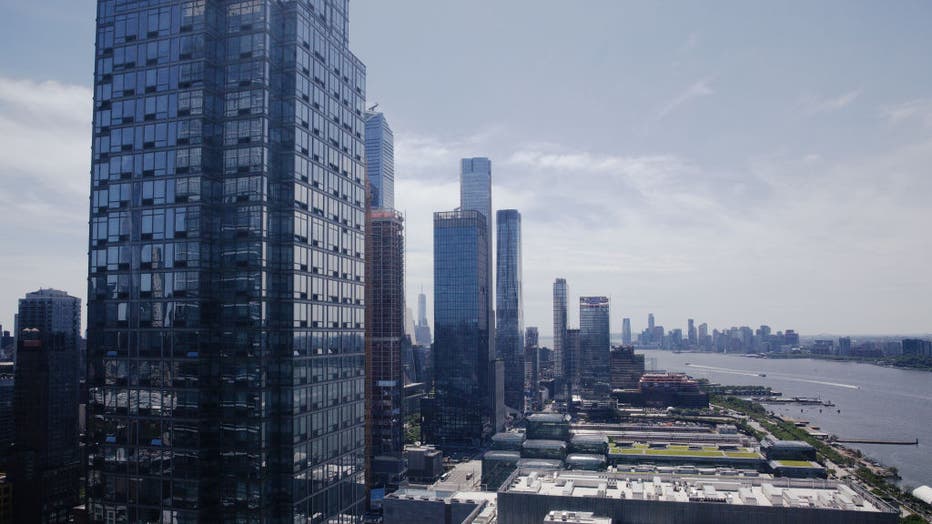Amid skyrocketing rents, NYC outlines plan to tackle housing crisis

Deputy Mayor on NYC's affordable housing crisis
A lack of affordable housing is one of the biggest issues facing New York City, and now Mayor Adams is hoping to turn things around with an ambitious plan to build 500,000 homes over the next decade. FOX 5 NY's Morgan McKay sat down with the city's Deputy Mayor to talk about how the administration is tackling the housing crisis.
NEW YORK - New York City has thousands of high-rise buildings, but a lack of housing supply has led to astronomically high rents for the 8 million people who live there.
"As daunting as this housing crisis is in New York, it is not unsolvable," Deputy Mayor Maria Torres-Springer explained.
In just the last decade – housing costs skyrocketed by more than 68 percent according to a recent report by the state comptroller - and now housing costs around $30,000 a year for the average household.
"Over the past decade, we've added about 800,000 jobs Morgan but only 200,000 new homes," Torres-Springer said.

Rent in Manhattan hits record high
Experts say you'd have to make nearly $220,000 at a minimum to be able to afford rent in Manhattan.
The Adams administration has created a new goal to build 500,000 new homes over the next decade – but there are a series of hurdles that would first need to be addressed, and a lot of those hurdles are based in Albany.
Last year, Governor Kathy Hochul pitched an ambitious housing plan that received major pushback from localities and state lawmakers.
In the end – state lawmakers couldn’t come to an agreement with the governor – and all the parties walked away accomplishing nothing major on housing.
"What we cannot have is another session where all of our aspirations and awareness of this housing crisis don't translate into real actions," Torres-Springer said.

Apartment Buildings along the East River in New York, US, on Sunday, May 28, 2023. Rental prices are growing at nearly twice the rate of entry-level salaries, so young newcomers are doing "whatever it takes" to live the lifestyles they've always aspi
In an exclusive interview with Deputy Mayor Torres Springer, she outlined a list of proposals the mayor’s administration is looking to Albany to accomplish this year.
At the top of the list – is to use already existing buildings – mainly office buildings.
According to one real estate firm - Colliers, nearly 18 percent of offices in Manhattan are sitting empty.
"There's more than 100 million square feet of outdated office space and what that could translate into are 20,000 new homes for New Yorkers," Torres-Springer said.
However, this requires two things from the State Legislature – zoning changes and tax incentives.

NYC rent board approves hikes
Millions of New Yorkers living in rent stabilized apartments will have to dish out more money each month after the Rent Guidelines Board pushed through controversial increases in a 5-4 vote. FOX 5 NY's Briella Tomassetti has the story.
"The floor plates always lend themselves to easy conversions," Torres-Springer said. "There are rules on the books in terms of light and air requirements."
One big tax incentive that was allowed to expire is 421a – it was put in place 50 years ago and requires developers to make a certain percentage of units affordable.
But it’s extremely controversial and left-leaning lawmakers say it is a giveaway to big developers. But without it, Torres-Springer says housing projects are at risk of being stalled.
"There are 10s of 1000s of units that can hang in the balance across the five boroughs, if they're not able to, really can get through the process before the deadline of the old program," Torres-Springer said. "We can and we should have healthy debates over the structure of the tax incentive…but also part of our job is to make sure at the end of that process, we have real tools that bring real relief to New Yorkers."
Some lawmakers are looking to replace it by requiring that developers dedicate a higher number of units as affordable – other lawmakers want to see tenant protections added in to a housing package such as good cause eviction.
This bill would require landlords to produce a reason to evict tenants and would restrict rent increases.
The Adams administration won’t say definitively if they will back the measure that’s on the table, but left it open-ended.
"We need to get to yes on a package that makes sense, that protects tenants, that boosts supply, that keeps in mind the particular needs of, for example, small landlords," Torres-Springer said.
The Adams administration is also looking to State lawmakers to legalize basement apartments and to lift the cap on density to allow for new construction.

